Panama Part II The Pacific is calling
Ahoy Dings and Bums, the absolute Pacific madness, the canal crossing and how it actually starts.
The Panama Canal. It connects the Atlantic with the Pacific and is therefore one of the most important links in global shipping. Small sailing boats like us only play an insignificant role. The canal is in operation 24 hours a day, 30-40 ships pass through it every day. And we were right in the middle of it.
The final preparations
Before we scurry across to the Pacific and embark on the great journey to Polynesia, we have a few exhausting weeks ahead of us. The final preparations have to be made on the boat and we have to stuff every corner of the boat with provisions. We plan to spend more than a year in French Polynesia, where the choice is limited and the prices are high...
Install a new solar charge controller for the batteries, clean and re-grease all winches, replace the autopilot bolt, repair the watermaker, change the engine oil and diesel filters, stock up on spare parts, install new toilets, repair the broken railing support, weld two fittings on the stern beam, check and readjust the mast and rigging, check and test all the on-board systems, stop everything inside the boat from sliding around, fill all the diesel canisters, re-mark the anchor chain and do a thorough spring clean.
Our two crew members, Dings and Bums, have now also arrived on the Cervino. We've known Dings aka David and Bums aka Dan since Gibraltar. David has even spent a month on board with us, travelling from Martinique to Grenada last summer. The two of them are hitchhiking around the world with their rucksacks and will be accompanying and supporting us for the next few months. Together we also do the bulk shopping, which deserves its name... We spend 7 hours in the shop, resulting in 12 full trolleys. We have them delivered to the ship the next day and spend the whole day stowing away the goods. And that was just the long-life stock, we only pick up fresh items shortly before departure...
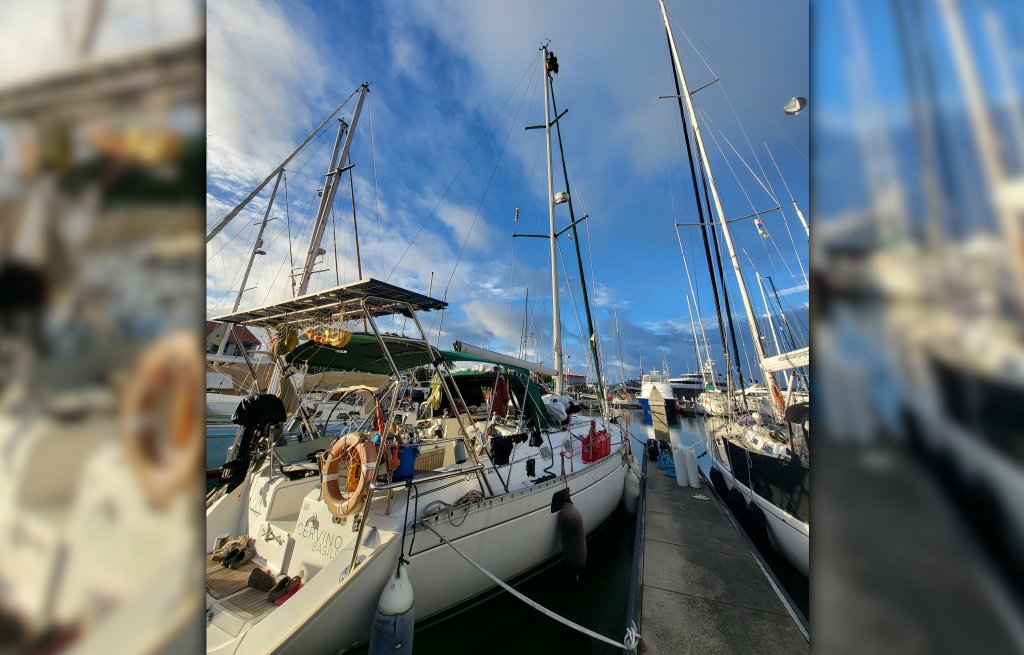
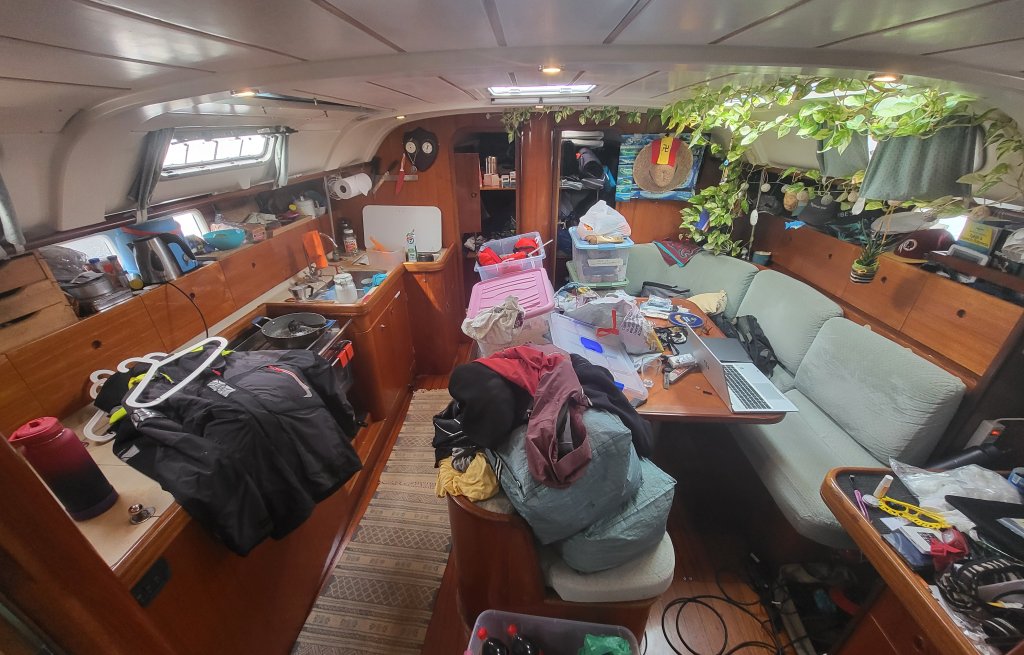
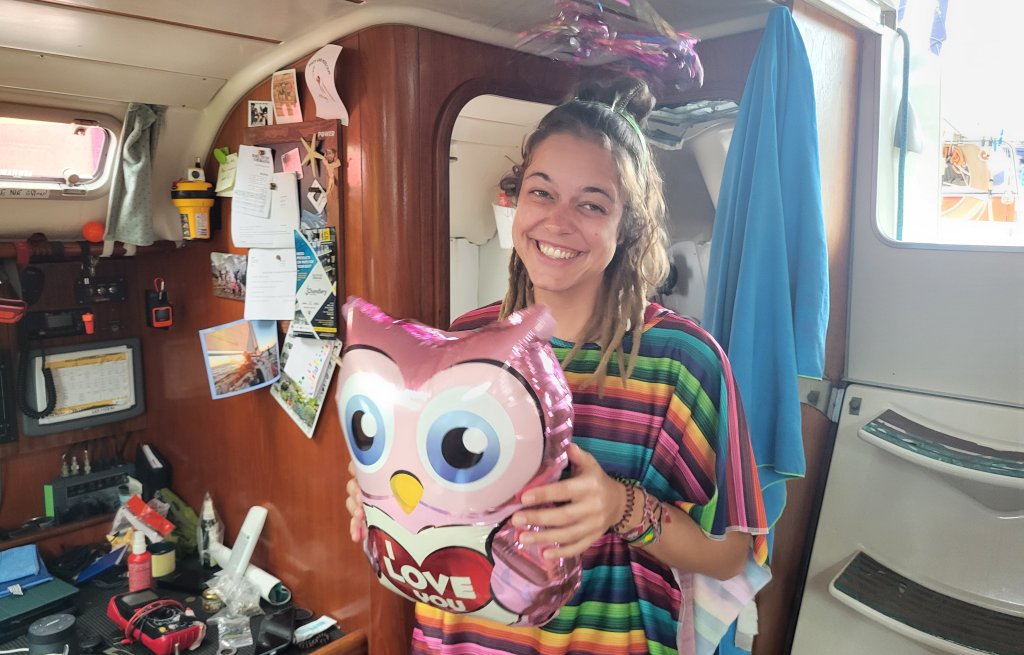
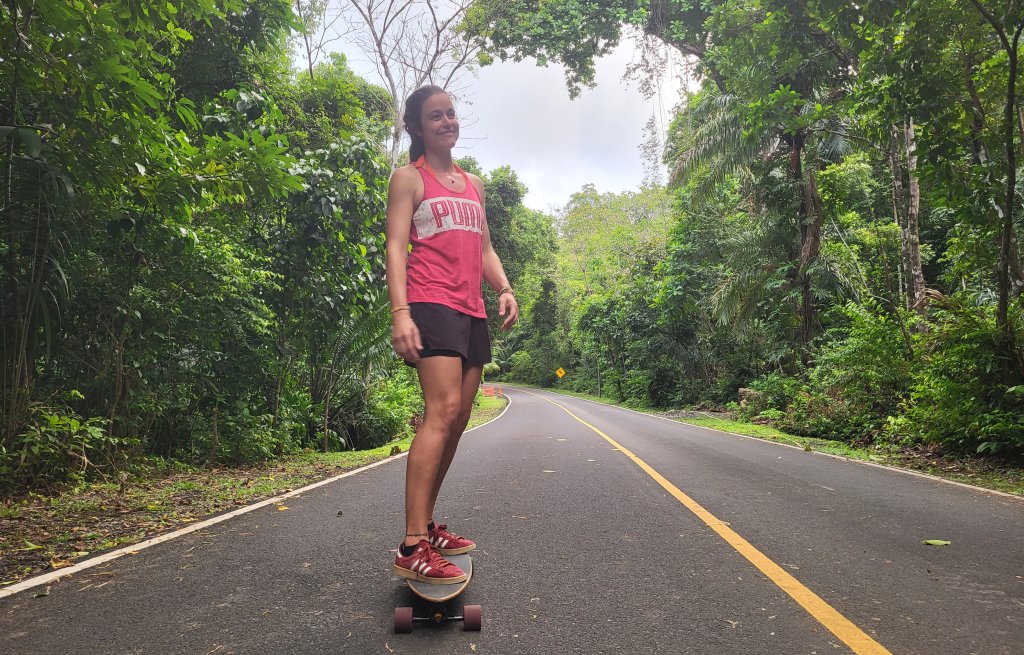
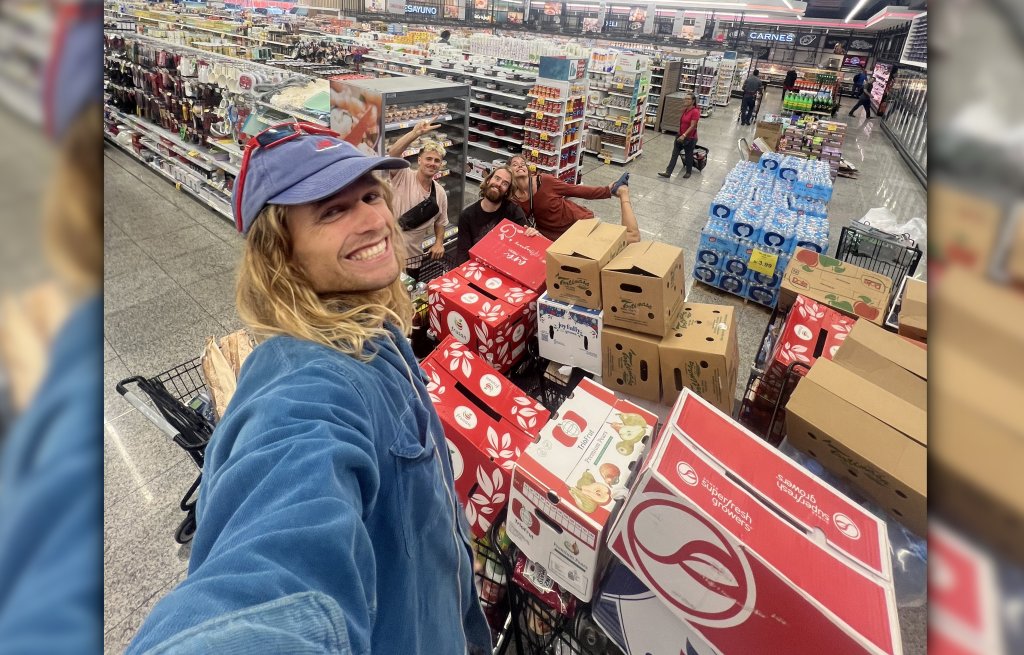
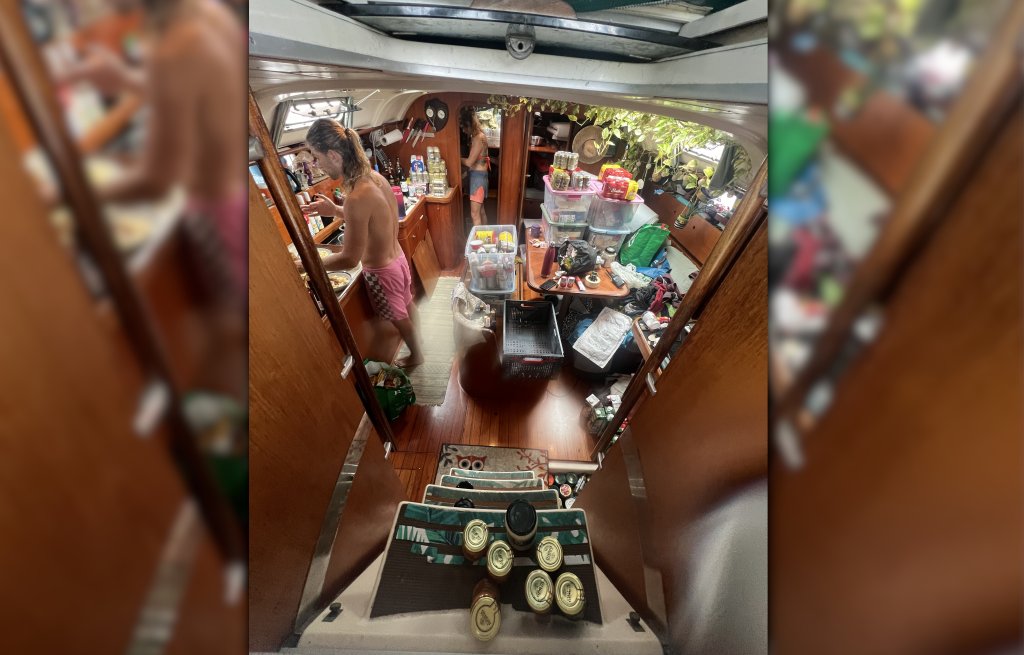
Now the time has come, on the afternoon of 4 May we find ourselves in the waters off the Panama Canal. Together with two other sailing boats, Sommerwind and L'Egaloupio, we wait here for instructions. After about an hour, a pilot boat arrives and unloads an "advisor" onto each of our boats. He will instruct us for the first stage of the canal. We also have Hugo on board, a friend from Mexico who lives in the city. We met at Carnival and as travelling the canal is his dream and we need one more person, he will be on deck with us today. The regulations state that the crew for a boat of our size (so-called "handlines") must consist of five people: The captain and four "linehandlers" who operate the lines in the locks.
The Panama Canal is one of the most important waterways in the world. It connects the Atlantic (or the Caribbean Sea) with the Pacific - saving ships thousands of kilometres of diversions around South America. Instead of sailing around the dangerous Cape Horn, the passage through the canal only takes around 8-10 hours if you are in a hurry.
The canal was opened in 1914, after an extremely costly construction phase in which many labourers worked in harsh conditions and thousands died - partly due to diseases such as malaria.
The locks lift the ships to a height of around 24 metres, over the artificially created Lake Gatún, and then back down to sea level. Since 2016, there have also been larger locks (the so-called "Panama Canal extension"), through which huge container ships - so-called Neo-Panamax ships - can also pass.
Around 30 to 40 ships travel through the canal every day, and Panama earns a lot of money from it. However, the canal is also dependent on fresh water - which causes problems in dry years such as the recent one, as each lock operation requires millions of litres of it.
In short, the Panama Canal is a true masterpiece of engineering - and a bottleneck for world trade.
We enter the canal at sunset. The first three locks will take us about 24 metres up to the level of Lake Gatun. We tie ourselves together with the other two sailing boats to form a large raft and are thrown two lines each from the left and right wall of the canal. Four men walk along at walking pace until we take our place behind a
large cargo ship. The gate of the lock closes and then it's off like Schmid's cat! The surface of the basin starts to shake as around 191 million litres of water pour into the lock in 8-10 minutes. We have to quickly tighten the lines so that we are not pushed into the canal walls. The whole process is repeated twice more until we moor at a buoy in Lake Gatun at around 10.00 pm. We spend the night here and continue our journey in the morning. We have a bite to eat, the advisor is picked up and then we fall into our bunks, exhausted.
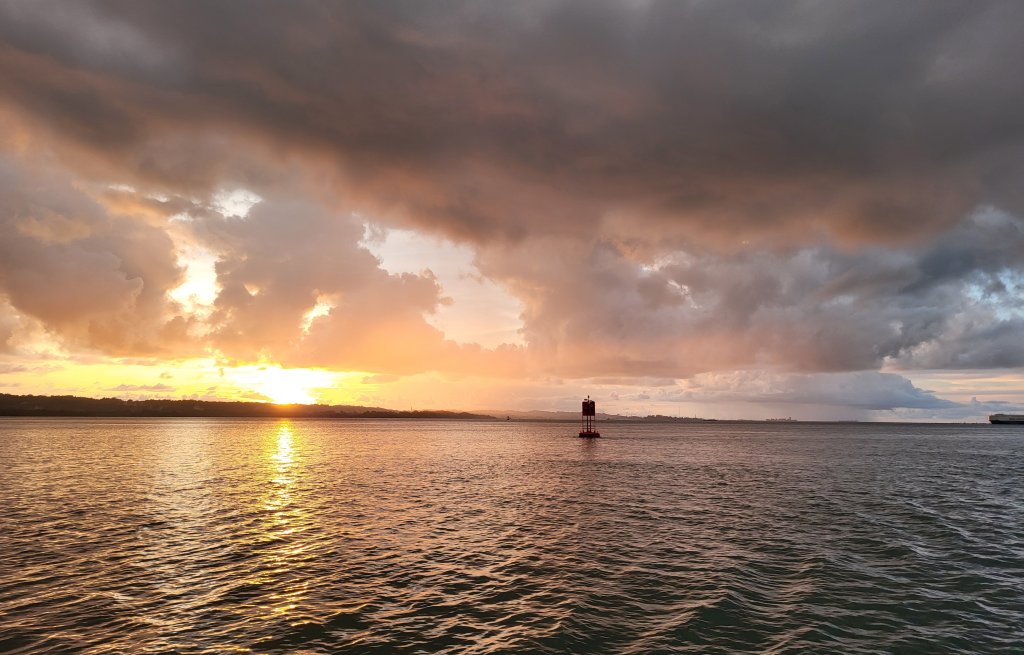
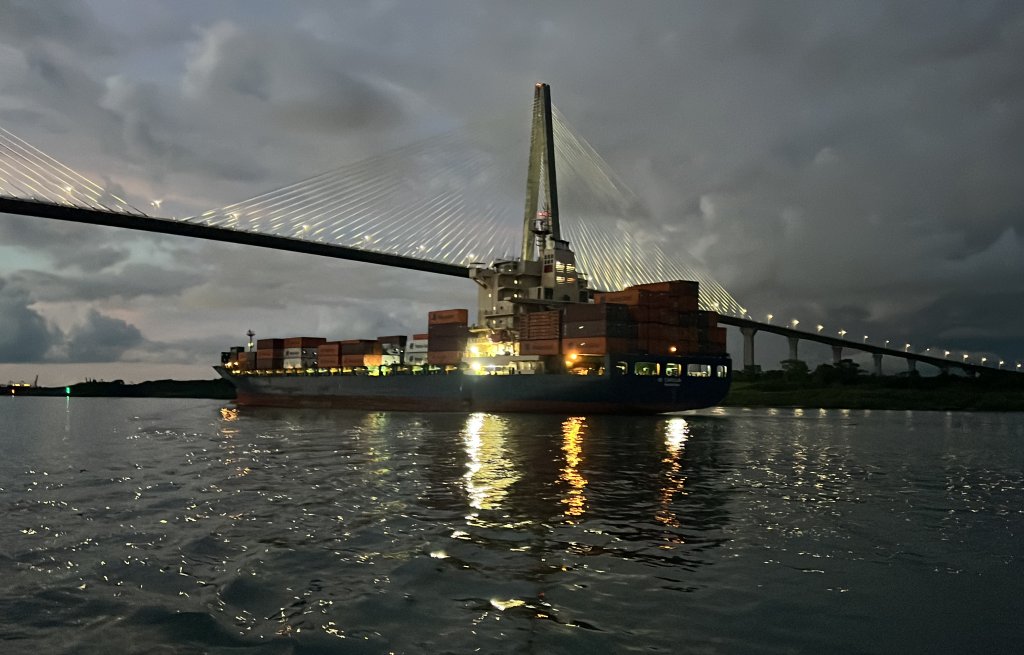
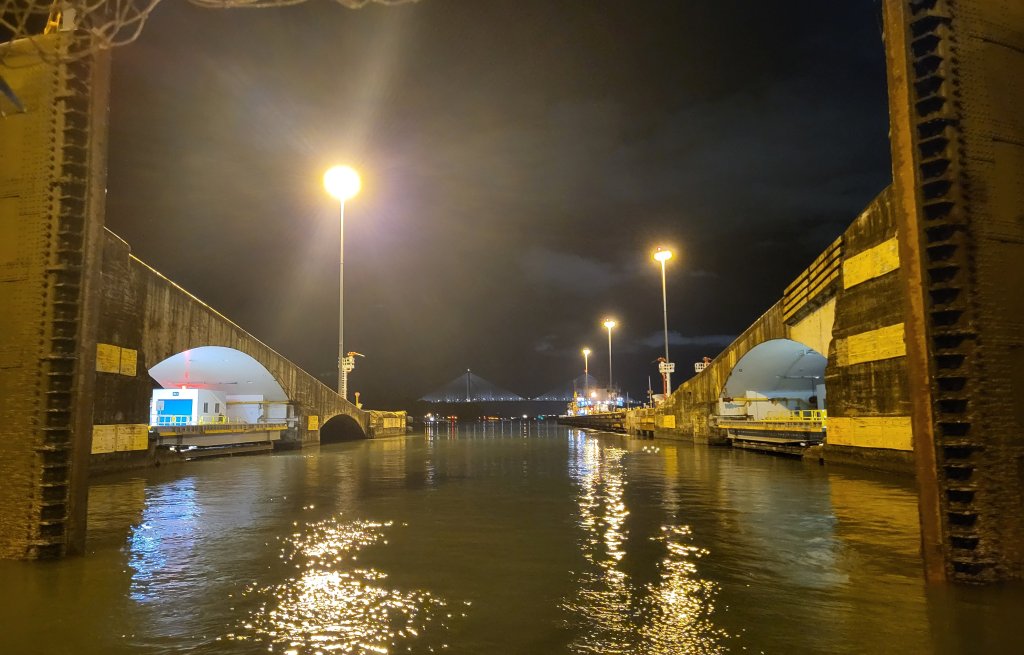
The next morning at 07:30, the advisor for the second day is delivered to us. However, he is nowhere near as friendly and helpful as the first one, as we unfortunately realise in the course of the day. We motor across Lake Gatun all day, catch a big wave from a cargo ship through our open deck hatches (completely unnecessary) and then enter the first lock at around 15:00. The procedure is exactly the same as the day before: we take our place in the lock in a packet with the other two sailing boats, this time in front of a large freighter. The way down the lock is much more relaxed than the way up, and we can even enjoy ourselves a little! The second lock is the Miraflores lock with the visitor centre. This is exactly where I stood with my parents on the grandstand almost three months ago;
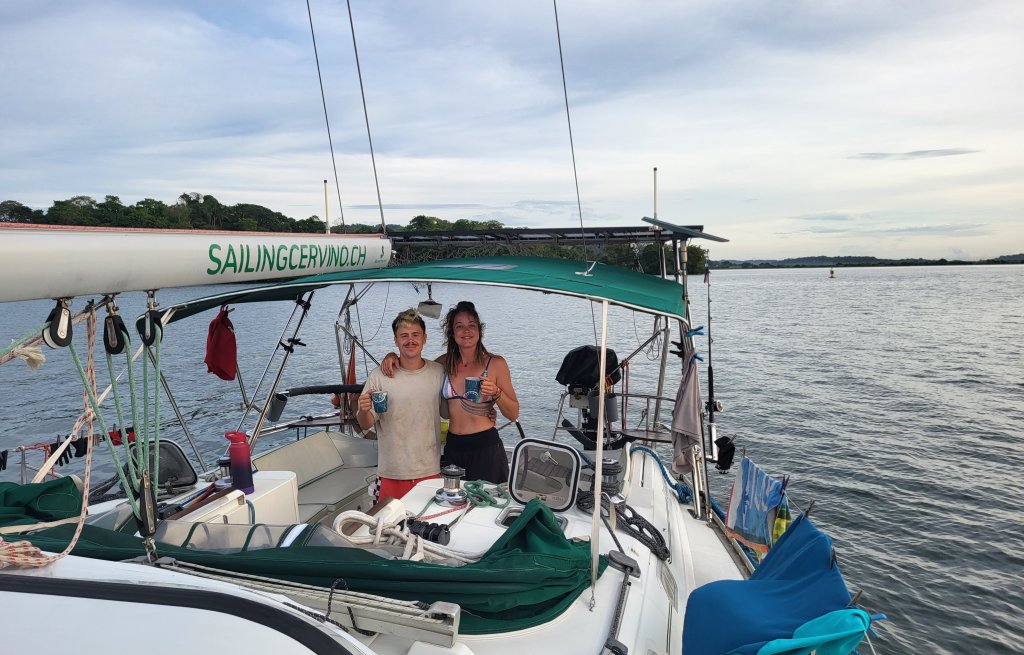
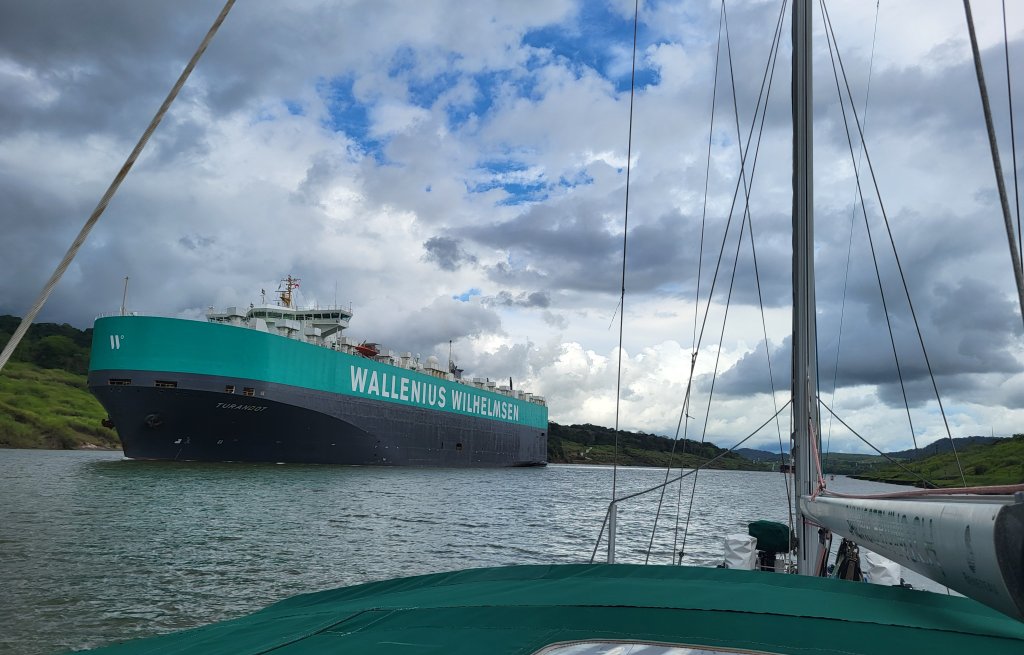
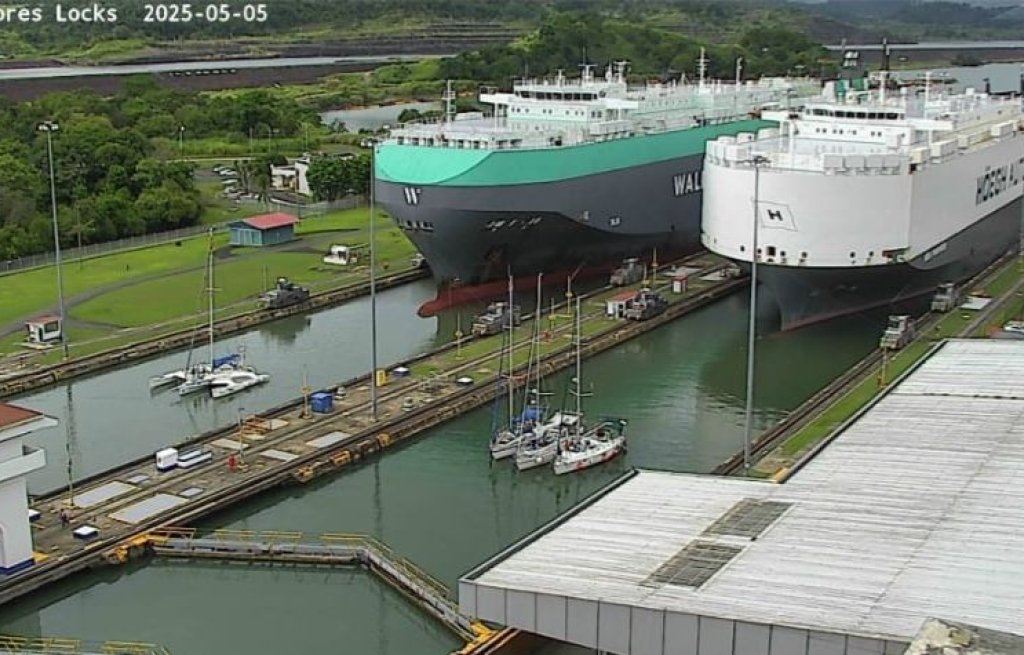
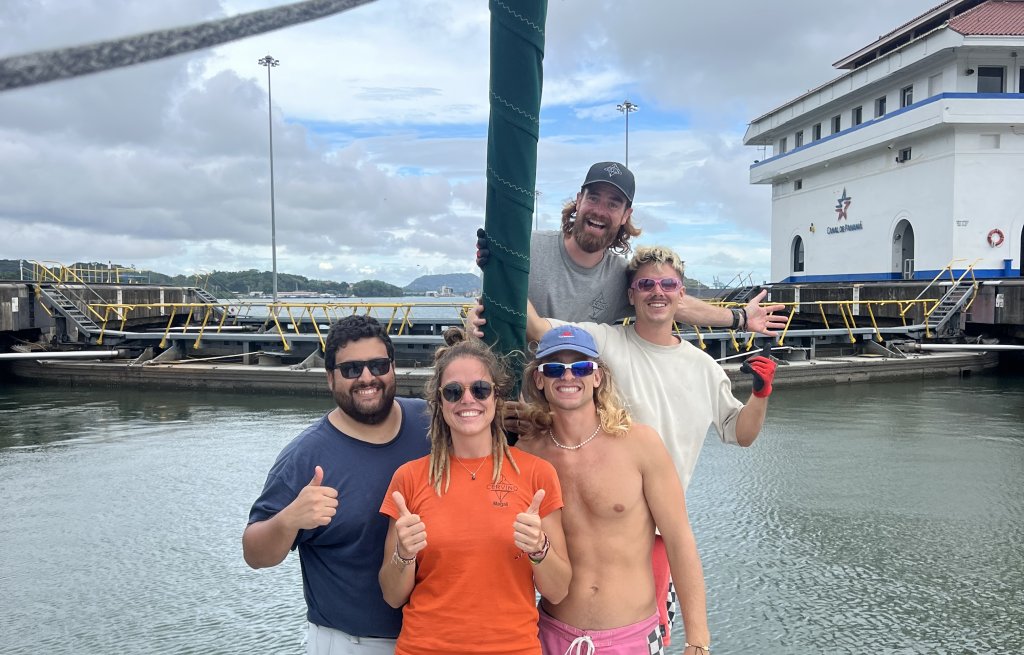
After we have also passed through the third lock, the last gate opens at around 17:00 and we enter the Pacific. Exactly 3 years ago today, on 5 May 2022, we untied the lines in Castellammare di Stabia and set off on our adventure. And now we are in the Pacific. What a moment, a reason to celebrate.
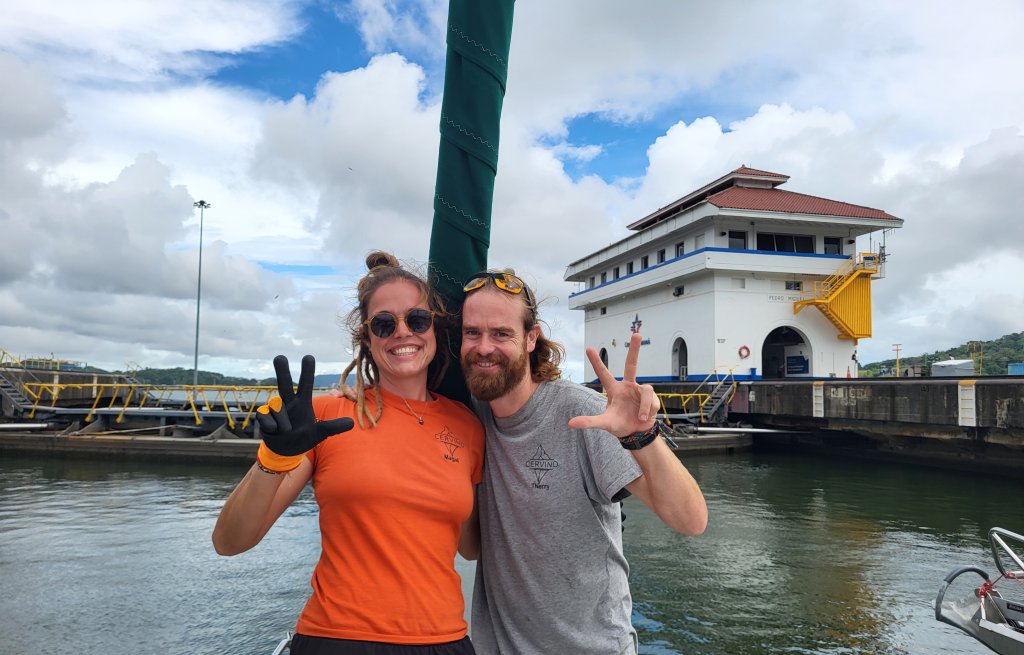
Ready for take-off!
We are anchored in Las Brisas, not far from Panama City, for another week or so. The last of the shopping is done (we've done quite a bit), the boat is ready and we treat ourselves to a last evening in the city with drinks in our favourite rooftop bar and delicious food in the fish market. At sunrise on 13 May, we weigh anchor and head south to the Las Perlas archipelago. Here we also meet up with three other boats, Libby, Pangea and Seven. Together we wait for the right moment to start the crossing. But it's not that easy, because the rainy season in Panama has begun and one storm front after another is moving across the Gulf of Panama. And folks, these are no schoolboy thunderstorms from Lake Zurich, these are full-blown, powerful and widespread cells with an incredible amount of lightning and thunder that sends shivers down your spine. Three sailing boats we know of (including Seven and L'Egaloupio) were hit by indirect lightning strikes in the Panama region and suffered damage to their on-board electrical systems. The navigation equipment doesn't particularly like the high voltage. Accordingly, we are not keen to go in there and it is quite a headache to decide whether to start or not. In the end, all the boats make the same decision independently of each other to wait a few more days. In the meantime, Christian & Andrea from Tarpan have also made it to us. We get our bodies and minds off the stress of the last two months, play volleyball on the beach, cut our hair and at midday on 18 May, the time has come. Anchor up, Pacific, we're sailing you now!
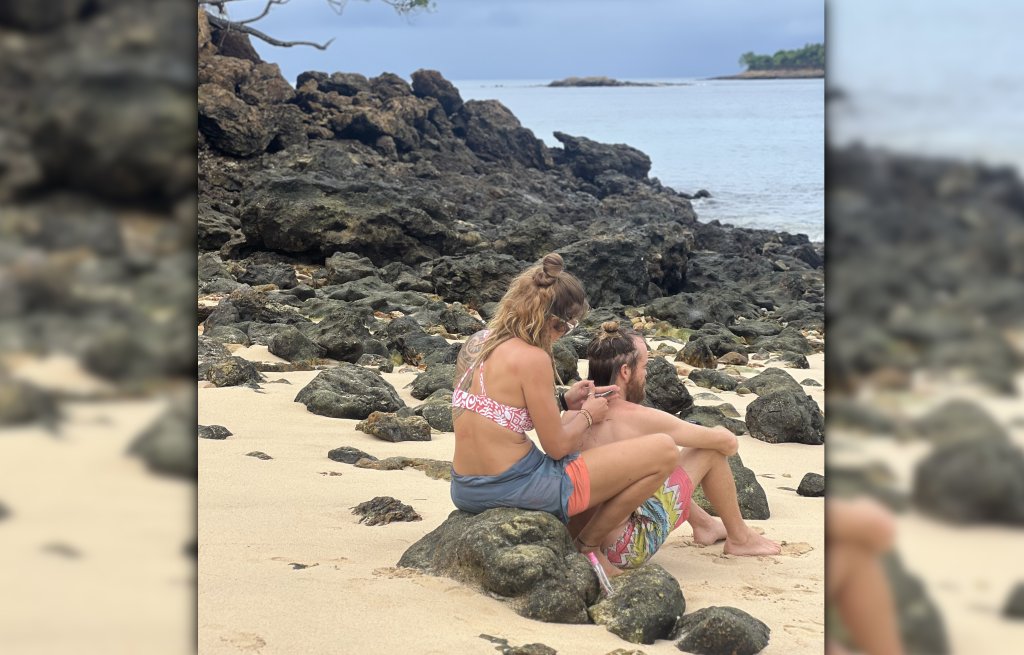
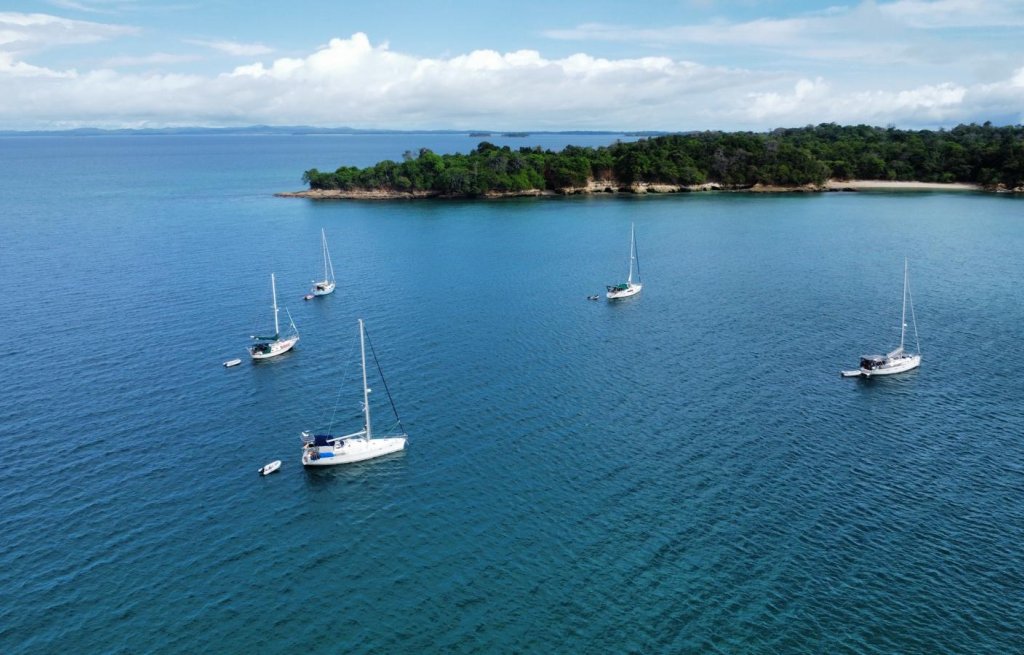
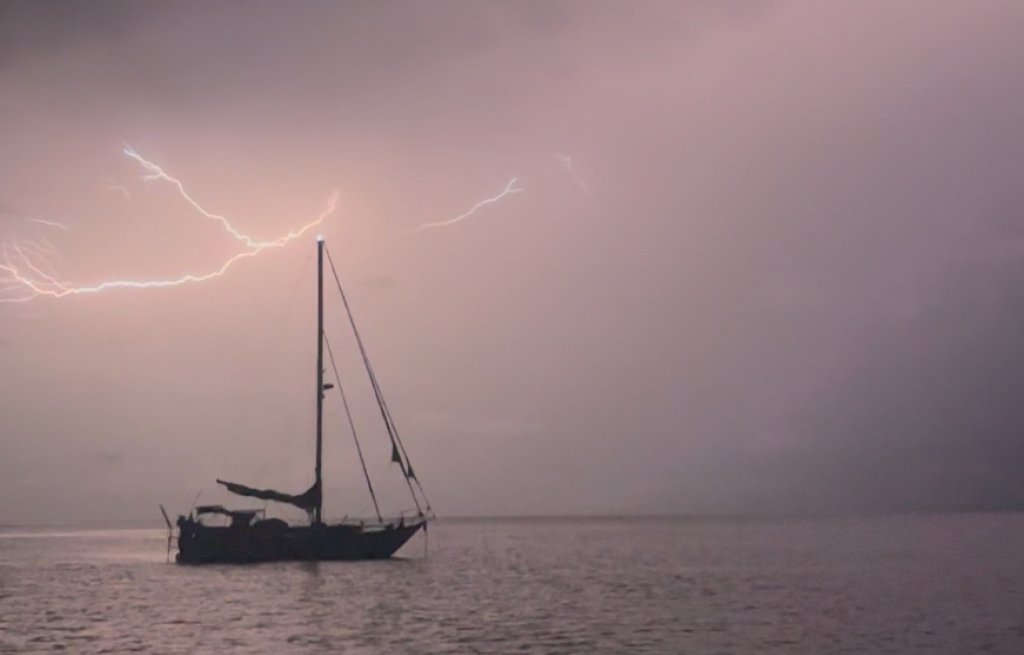


The weather forecast is more bad than good, there is no real wind but at least the risk of thunderstorms is much lower than a few days ago. However, we are preparing for about 400nm with engine assistance until we reach the trade winds north of Galapagos. There are at least 4000nm between us and the Marquesas, French Polynesia. We expect to be at sea for about 5 weeks;
Well then, landlubbers, the time has come, we're doing it now, we're sailing across the Pacific.
What monsters of the deep sea we are pulling on board the Cervino, why we are drifting backwards for 7 hours, and what else is going on in the Pacific?
Come along on the journey...